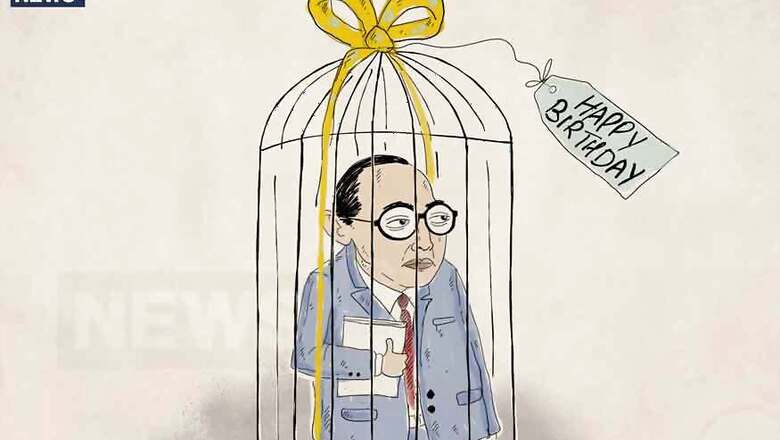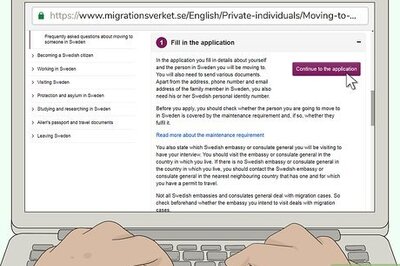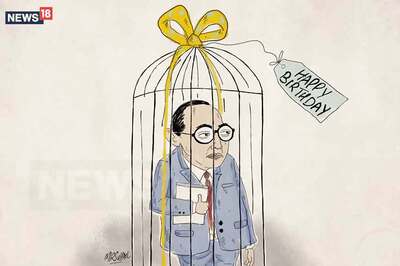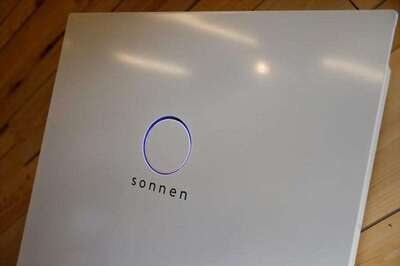
views
As the BJP leadership shouts from the rooftop that no one else ever respected and honoured Dr. Babasaheb Ambedkar as much as they do, resentment among the Dalit masses keep haunting the party.
The party might distance itself from the Supreme Court ruling on the SC/ST Act, but it cannot stop its zealous supporters from painting Babasaheb in saffron or stop the numerous dignity-related flashpoints in which Dalits are getting restless.
In this backdrop, can the BJP sit pretty and hope to increase its vote share among the Dalits this time around? Can it still expect that with the help of Ramdas Athavale in Maharashtra or Ramwilas Paswan in Bihar, or with its Delhi-based MP, Udit Raj and many more MPs elected on its ticket from constituencies reserved for SCs, it can garner Dalit votes in the 2019 Lok Sabha elections?
Can the party still hope that Dalits would be swayed by the claims of the Prime Minister that only his party and government have given due respect to Babasaheb?
The question gains significance with the Modi charm starting to fade as far as the middle class is concerned and suddenly the BJP has to wake up to the growing need to get votes from the underprivileged — the poor, the Dalits, Adivasis and the likes.
If its core vote wavers and if political competition becomes close at the constituency level, then in sheer numeric terms, Dalit votes would become important for the BJP.
Even ideologically, Dalit vote is critical to the BJP because of its urge to exhibit how all sections of the Hindu society can be brought politically together under its auspices.
Its victory in 2014 saw a consolidation of upper caste and OBC votes (barring some major peasant OBC communities) but it cannot claim to have charmed the Dalit voters then.
Going by the findings of the National Election Studies (NES2014) conducted by Lokniti, under one person in every four Dalit voters chose the BJP in 2014. So, it is important for the BJP to now augment the Dalit votes if it wishes to claim that it is the sole claimant to the Hindu vote bank and to show that Dalits have no problems with its Hindutva agenda.
To say that under 25 percent Dalits voted for BJP last time is an incomplete, though accurate presentation of the picture.
The NES 2014 also allows us to look at the states. In states where the Scheduled Caste population is relatively higher—UP, Punjab, Himachal, Haryana—the BJP did not actually get good support from the community. In UP, despite the watershed defeat of BSP, the party still received two Dalit votes from every three, thus, the BJP had a very limited share of Dalit votes in this crucial state. In Punjab, Dalit votes was split between AAP, Congress and the rest, again, BJP was only a minor player here as far as Dalit votes are concerned.
In Himachal, where there is a two-way contest between Congress and BJP while Congress was the main recipient of Dalit votes (55 percent as against 36 for BJP). In Haryana, just about one in every five Dalits voted for the BJP. In West Bengal, the CPI(M) and the Trinamool Congress were the main contenders for the Dalit vote.
Thus, the 24 percent vote that the BJP polled among Dalit voters came mainly from states where there is a two-way contest rather than the states where SCs constitute a larger share in the population, particularly Madhya Pradesh and Rajasthan (in Gujarat, Congress polled more SC votes than the BJP). In short, the Hindu rainbow of the BJP is still quite hazy at its ‘margins’.
The constant argument that Congress never paid enough respect to Dr Ambedkar as the BJP is doing now, comes from a similar background. But curiously, there are some inherent problems from the BJP to truly win Dalit hearts. One difficulty is that its core constituency consisting of upper castes and OBCs is not at all comfortable with the Dalits even today.
The BJP and RSS, despite their claims that they work assiduously for overcoming caste prejudices, simply do not have any effective strategy to forge a social coalition of these sections. Secondly, their efforts at a rhetorical level to appropriate Dr. Ambedkar have severe limitations given the fact that Ambedkar was a trenchant critique both of Hindu religious philosophy and of Hindutva. Therefore, BJP’s appropriation of Dr. Ambedkar per force has to be only at a symbolic level and politically superficial.
Today, as the next Lok Sabha elections approach slowly, the Dalit voter is at the crossroads. She is not convinced that any one party would nationally represent the agony and anguish of the community; she is not sure that giving up concerns of the Dalits as a community and merger with the larger electorate would do them any good; the Dalit voter, though proud and enamoured of Ambedkar statues, is less than convinced that statues and memorials really help ameliorate the day-to-day indignities thrust on her.
This is not to say that Dalit voters are unaware of the larger issues of ‘development’ and fair distribution. In fact, the intersection of the two concerns helps them make political choices of contingent nature, which are basically state level choices.
This situation implies that despite the throaty rhetoric of being pro-Ambedkar and pro-Dalit, the BJP would most likely find its weak Dalit base further dwindling. What the Dalits are facing today, appears to be at worst caused by the current dispensation and at best, conveniently tolerated by the establishment. It would surely require real political magic for the BJP to make the Dalits forget this.
(Author teaches Political Science and is co-director of the research programme, Lokniti.)




















Comments
0 comment